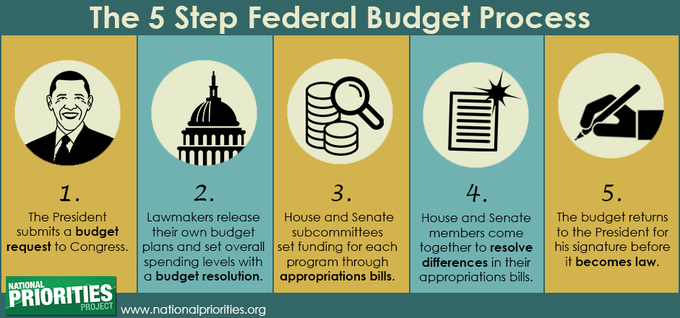Where Are We in the Federal Budget Process?
By
Jasmine Tucker
Posted:
This week, Congressional lawmakers will publish several budget proposals as alternatives to the president’s budget that was released in early February. Are you wondering why Congress does this?
Well, it’s all a part of the annual appropriations process that determines our federal discretionary budget each year. As we note on Federal Budget 101, the federal budget process kicks off every year when the president submits a budget request to Congress.
After the president submits his request, Congress begins the months-long process of reviewing that request. Many lawmakers release their own budget plans that showcase their own priorities for the nation – that’s where we are now in the process. Next, lawmakers will write a budget resolution that sets overall spending levels, which is supposed to be passed by both the House and Senate by April 15 – though that may not happen.
After a budget resolution is passed, Appropriations Committees in both the House and Senate get down to details, determining the precise levels of spending, or budget authority, allowed for all discretionary programs. Both chambers vote on the Appropriations Bills and the bills go to the president’s desk for his signature. Once he signs them, we have a discretionary budget for the upcoming fiscal year, which starts October 1. However, Congress has not followed through on all of these steps for 20 years.
Later this week, we’ll have our annual Competing Visions analysis ready – your one-stop shop for how each of the major budget proposals stacks up against Americans’ priorities. Stay tuned!
